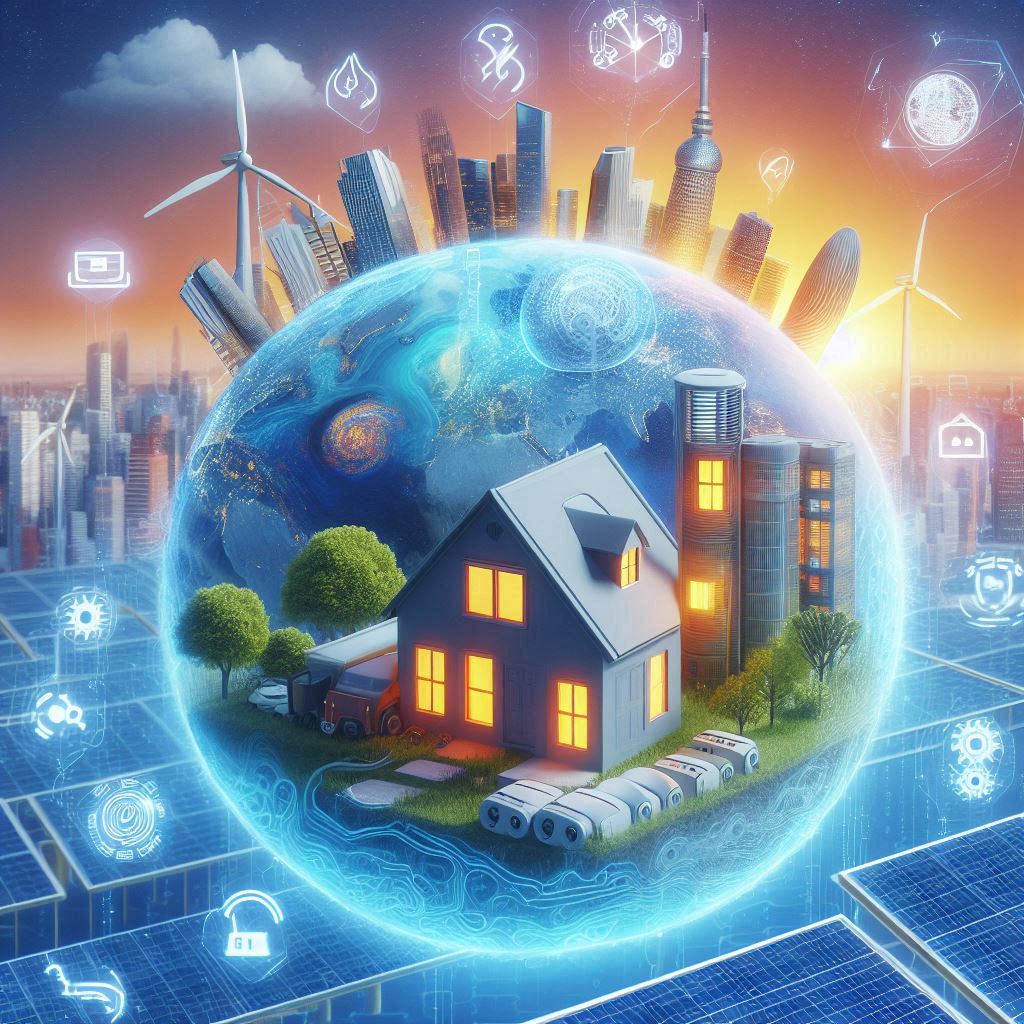Google’s greenhouse gas emissions have increased by 48% since 2019 | Mashable
(Ref. by Amanda Yeo on July 3, 2024

Google’s 2024 Environmental Report can be found HERE:
In an era where tech giants are increasingly scrutinized for their environmental impact, Google’s latest sustainability report paints a concerning picture. The company’s greenhouse gas emissions have skyrocketed by a staggering 48% since 2019, with artificial intelligence (AI) emerging as a major culprit behind this surge.
Released on July 2, 2024, Google’s annual Environmental Report reveals that the tech behemoth emitted 14.3 million tonnes of carbon dioxide equivalent in the past year alone. To put this into perspective, that’s equivalent to the annual emissions of over 3.1 million cars. This marks a 13% increase from the previous year and a 48% jump since 2019, the baseline year for tracking the company’s environmental progress.
The primary drivers behind this dramatic increase? “Increases in data centre energy consumption and supply chain emissions,” according to Google. In simpler terms: the rapid integration of AI across Google’s products and services.
It’s no secret that AI is an energy-intensive technology. Google itself admits that AI-powered search summaries consume ten times more energy than standard Google searches. As the company continues to embed AI into virtually every aspect of its operations – from Google Translate to Google Photos – the environmental toll is becoming increasingly apparent.
What’s particularly alarming is Google’s seeming lack of concrete plans to reconcile its AI ambitions with its environmental goals. The company has committed to achieving net zero emissions by 2030, but the current trajectory suggests this target may be slipping out of reach. While Google acknowledges that its emissions may continue to rise temporarily before declining, it offers little in the way of practical solutions to this dilemma.

“Our approach will continue to evolve and will require us to navigate significant uncertainty — including the uncertainty around the future environmental impact of AI, which is complex and difficult to predict,” the company stated in its report. This vague stance does little to inspire confidence in Google’s ability to balance innovation with sustainability.
To be fair, the report isn’t all doom and gloom. Google has made strides in other areas of environmental stewardship. The company tripled its freshwater replenishment rate to 18% (up from 6% in 2022) and achieved 99% plastic-free packaging for new products launched in 2023. However, these positive steps are overshadowed by the massive increase in greenhouse gas emissions.
As we look towards the future, it’s clear that the tech industry needs to grapple with the environmental implications of AI more seriously. While AI holds promise for optimizing various sectors and potentially reducing global emissions, its own carbon footprint cannot be ignored.
Google’s report serves as a wake-up call not just for the company itself, but for the entire tech industry. As we continue to push the boundaries of what’s possible with AI, we must also innovate in our approaches to sustainability. The future of our planet may well depend on striking this delicate balance.

AI’s impact on climate, heating, and electricity consumption is multifaceted. Let’s break it down:
1. Electricity Consumption:
- Energy Demand: AI, data centres, and cryptocurrency collectively accounted for about 2% of global electricity demand in 2022. Projections from the International Energy Agency (IEA) suggest that by 2026, their electricity consumption could double compared to 2022 levels¹.
- Uncertainty: The IEA’s projections vary widely, estimating additional electricity demand between 160 terawatt-hours (TWh) and 590 TWh. To put this in perspective, it’s roughly equivalent to adding “at least one Sweden or at most one Germany” to global electricity demand¹
2. Energy Efficiency:
- Task-Specific Models: Using smaller AI models tailored to specific tasks can significantly improve energy efficiency. For instance, generating text consumes thousands of times less energy than creating images.
- Generative Models: Some powerful AI models, like those used for generating images, have a high energy price tag. Creating 1,000 images with such models can emit as much carbon dioxide as driving just over four miles in a gas-powered car¹.
3. Climate Impact:
- Positive Aspects: AI can improve climate models, optimize digital tech production, reduce waste in transport, and enhance carbon capture processes.
- Smart Homes: A.I.-run smart homes could potentially reduce households’ CO₂ consumption by up to 40%³.
4. Future Prospects:
- Energy Storage: AI can help bolster energy storage capabilities.
- Green Energy Sources: It may catalyze breakthroughs in green energy sources like nuclear fusion.
- Climate and Weather Predictions: AI can enhance predictions for better energy planning².

In summary, while AI’s energy demands are significant, its potential positive impact on climate-related tasks and energy efficiency should not be overlooked. Balancing innovation with sustainability remains crucial for our future.
Source: Conversation with Copilot, 08/07/2024
(1) AI is an energy hog. This is what it means for climate change.. https://www.technologyreview.com/2024/05/23/1092777/ai-is-an-energy-hog-this-is-what-it-means-for-climate-change/.
(2) As Use of A.I. Soars, So Does the Energy and Water It Requires. https://e360.yale.edu/features/artificial-intelligence-climate-energy-emissions.
(3) How to manage AI’s energy demand — today and in the future. https://www.weforum.org/agenda/2024/04/how-to-manage-ais-energy-demand-today-tomorrow-and-in-the-future/.
(4) How artificial intelligence can tackle climate change – National Geographic. https://www.nationalgeographic.com/environment/article/artificial-intelligence-climate-change.
(5) How AI Is Fueling a Boom in Data Centers and Energy Demand. https://time.com/6987773/ai-data-centers-energy-usage-climate-change/.




No Comments